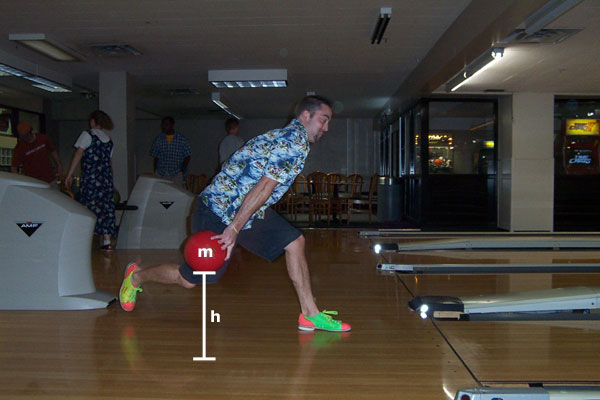 background source: http://www.bluebomber.com/japan/ | Introduction | Potential Energy | Direction of Initial Force | Direction of Impact | Pin Action | Sources | Gravitational Potential Energy Depending on the height from which the bowler drops the bowling ball, the ball will have a certain amount of potential energy. If the bowler bowls with a straight ball, the potential energy of the ball will not affect their game very much. It will, however, draw attention to the bowler when they drop the ball sufficiently high as to broadcast sonic reverberations of the ensuing lane-punishment for the rest of the bowlers to hear (and laugh at). Thus, it is in the straight-ball bowler's best interests to keep the ball as close to the lane as possible upon release. |
